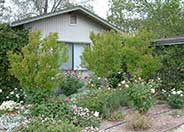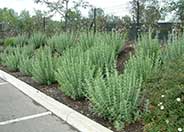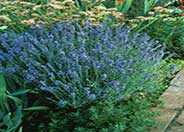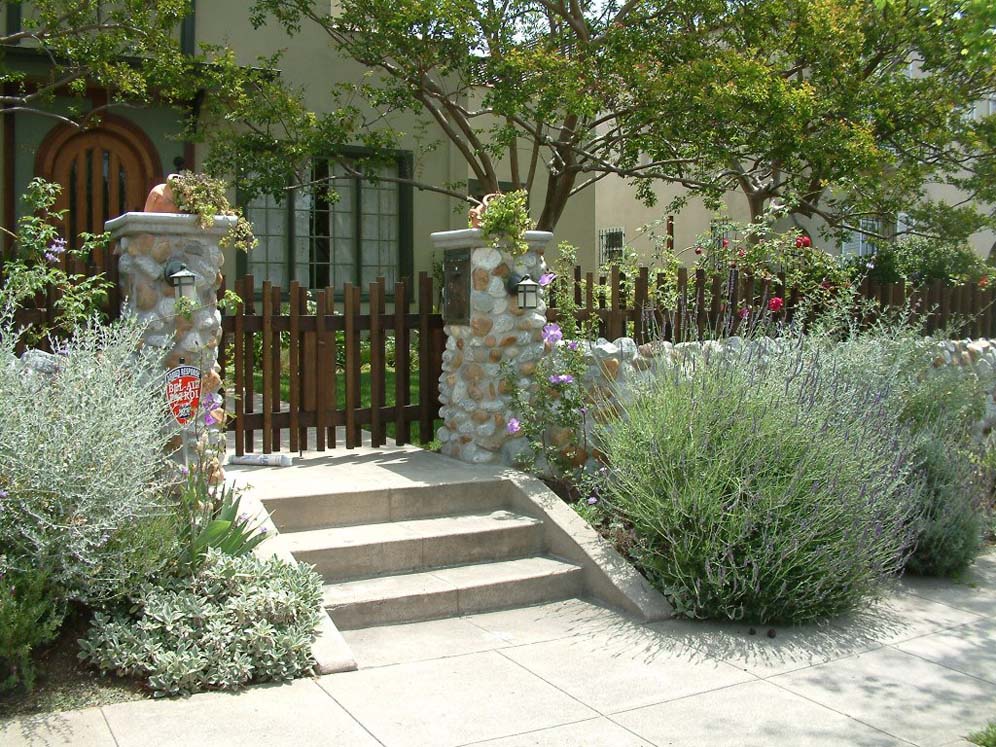
Common name:Crape Myrtle
Botanical name:Lagerstroemia indica
The new leaves of this species are 2" long, bright green, and tinged with bronze. Its fall color is affected by the weather. While it has a bare outline, its rounded seed capsules add interest. Its delicate flowers bloom in 6"-12" long clusters. The colors of its flowers are shades of red, rose, pink, purple, and white. It thrives on heat and new cultivars have been created that resist mildew.

Common name:White Sage, Sacred White Sage
Botanical name:Salvia apiana
This woody shrub has long stems with silvery white leaves and fragrant white flowers that bloom in the spring. It provides a strong structural form as a garden focal point. It can reach 6' tall and 6' wide.

Common name:Little Spires Russian Sage
Botanical name:Perovskia 'Little Spire'
This broad perennial will grow 3'-6' tall and has small, gray green leaves with blue violet flowers that bloom in the summer.

Common name:Lavender Lady English Lavender
Botanical name:Lavandula angustifolia 'Lavender Lady'
A well-developed woody base is apparent with this evergreen subshrub. Its leaves assume an obtuse form, and have a gray green color above and a white woolly shade below. It needs little water, full sun, and well drained soils. Strong lavender scent is used for perfumes and sachets.
Pest Management
Are pests bugging you? If pests are taking over there might be a good reason! Instead of grabbing that bottle of spray, consider using techniques that can solve your pest problems without toxic pesticides.
Click in the green box for more information
| Designer: | Three Step Entry |
Photographer: GardenSoft |
Soils and Compost:
Incorporate compost 6" into your soil to retain water, reduce compaction, feed earthworms, and provide valuable nutrients to your plants.
Integrated Pest Management:
Remove irrigation water and fertilizer from areas where you don't want weeds to grow.

